Do You Know Your 4 (+1) Bento Types?
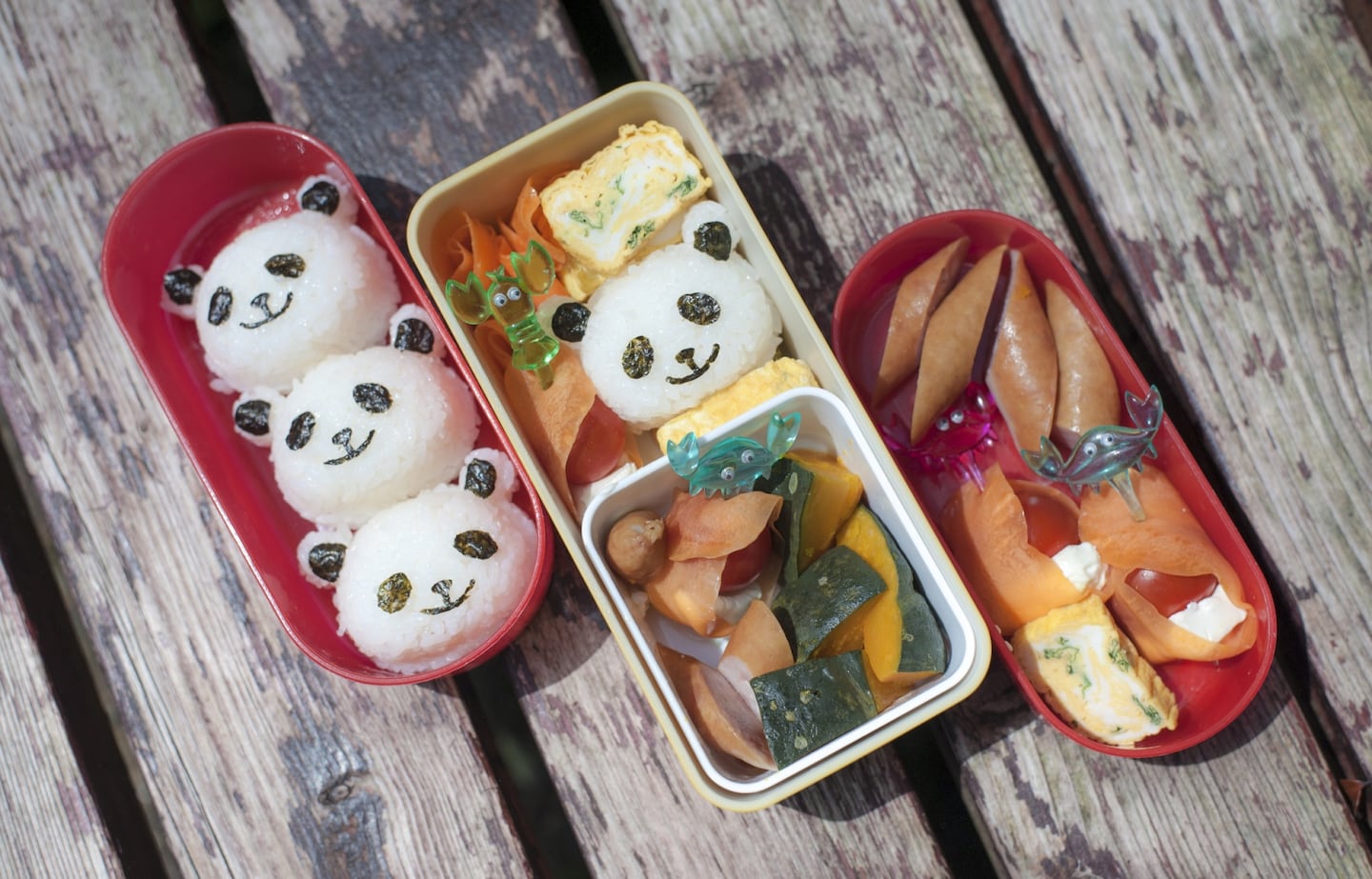
B-e-n-t-o. If just hearing the name of this boxed delicacy makes your mouth water, you’d better keep your eyes glued to our site this week. Over the decades, this staple of the Japanese culinary culture has developed its own customs and variants. While it’s impossible to count them all, here’s a brief introduction to the most common ones!
By Diletta Fabiani4. Kyaraben (or Charaben), the ‘Character Bento’
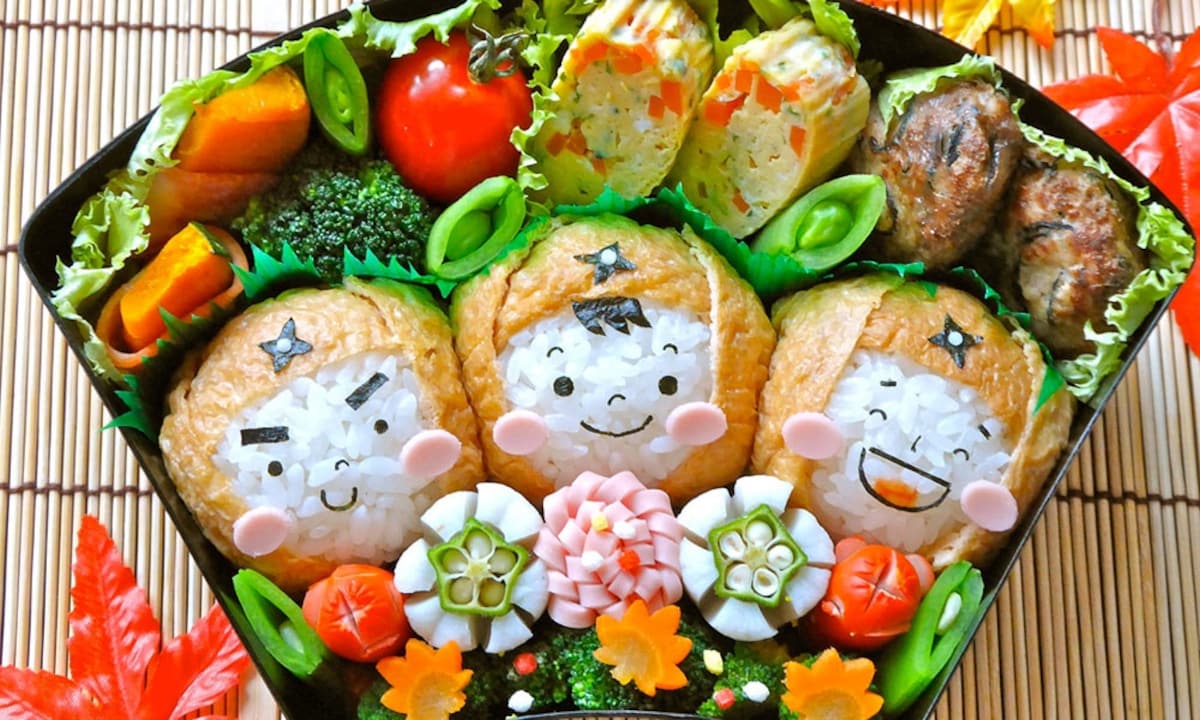
http://japan-magazine.jnto.go.jp/en/1503_charaben.html
To foreign eyes, kyaraben (or charaben) is one of the most famous incarnations of bento: the food takes the shape of cute animals and anime characters, transforming the meal in a joy for the eyes.
Given its fame you might think that Japanese citizens, after an endless day of work, come home and spend their free time preparing elaborate character bento, but this isn’t the case. While kyaraben is often used as a way around children’s food pickiness, for many adults it’s more an occasional hobby than a daily occurrence.
If you live in Japan and want to start experimenting with kyaraben, you can easily find basic accessories such as cute seaweed cutters at 100 yen shops. You may also want to take a look at our list of top bento books for teaching the art of making food look adorable.
3. Makunouchi, the ‘Between Acts’ Bento
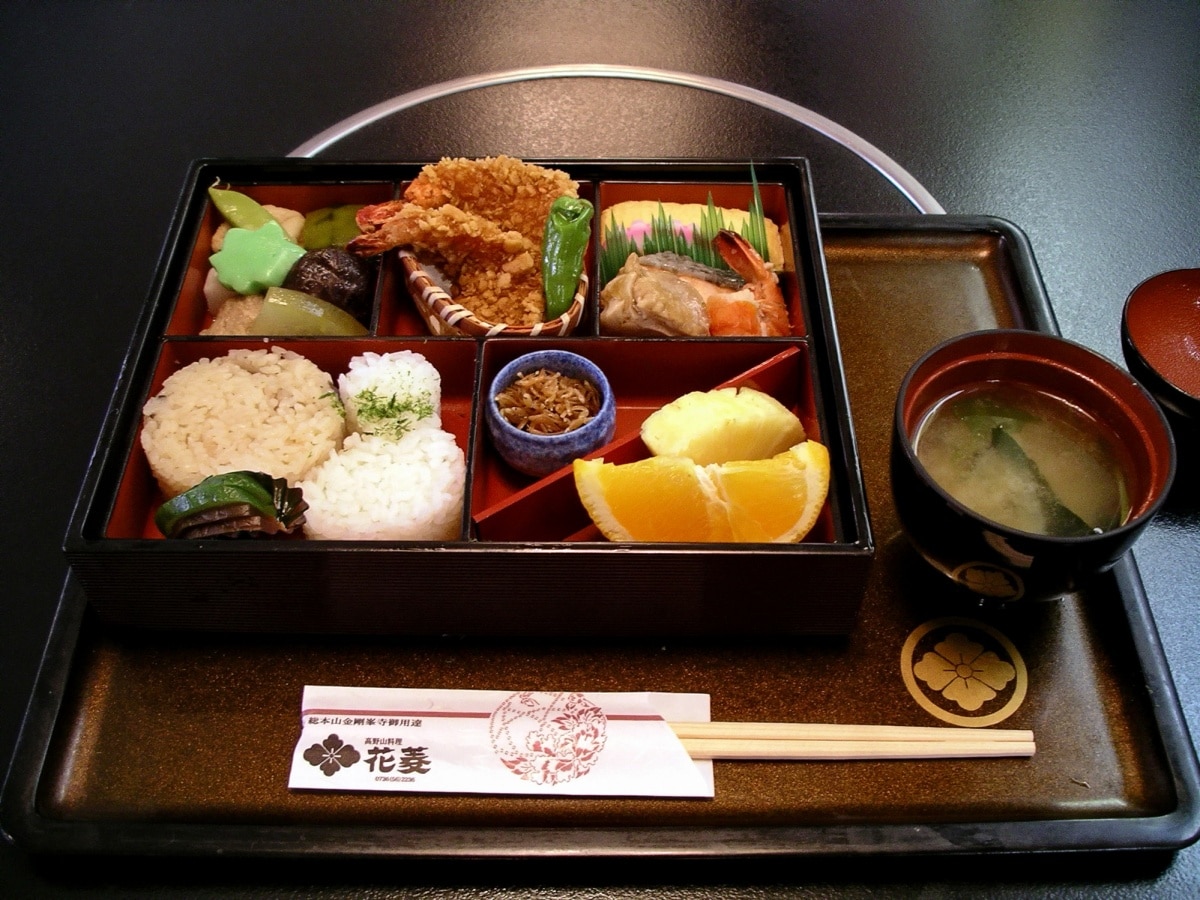
https://upload.wikimedia.org/wikipedia/commons/e/ea/Bento_at_Hanabishi,_Koyasan.jpg
As the name suggests, this kind of bento was historically eaten in the Edo period (1603-1868) in-between theatrical acts—and if you’ve ever been to any kabuki shows, you know how long they can last.
While the name comes from the theatre, nowadays this luxurious bento can be purchased in restaurants and department stores (and in its cheaper versions, also at convenience stores). It’s meant to be eaten at a table and the contents can vary, but the main part of the dish is white rice, shaped in small rectangles reminiscent of a rice straw bag, sprinkled with black sesame seed and sometimes garnished with a pickled plum. Sides include meat, fish and various kinds of vegetables.
2. Ekiben, the ‘Train Station’ Bento
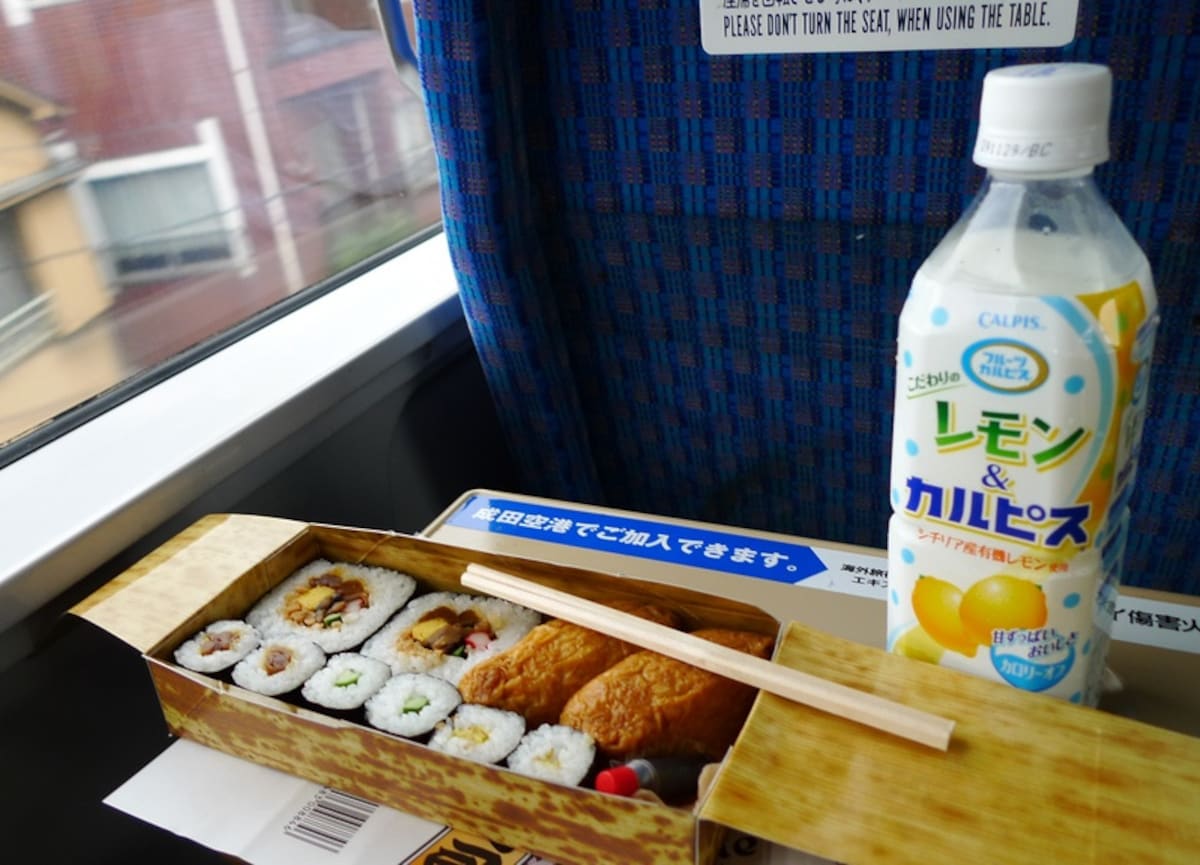
https://www.flickr.com/photos/cloneofsnake/3731419498/
Eki means train station in Japanese, as this kind of bento was originally thought up for travelers. As fast as a bullet train can be, it’s still a good idea to face long trips with a full stomach, especially if you’re confined for hours in a small metal box with dozens of strangers.
This kind of bento is mostly sold at the starting stations for long-distance trains, onboard those same trains, or in department stores attached to major stations.
The ekiben’s main feature is an optimal price-to-calories ratio, keeping both the traveler’s body and wallet happy. The average cost is around ¥1,000, and while it’s mostly rice-based, the other ingredients vary, with special attention to local specialties. There are said to be more than 2,000 versions all over Japan!
Finally, a small curiosity: the ekiben also has a dedicated commemorative day, on July 16th—the date when the first ekiben was supposedly sold.
1. Koraku, the ‘Picnic’ Bento
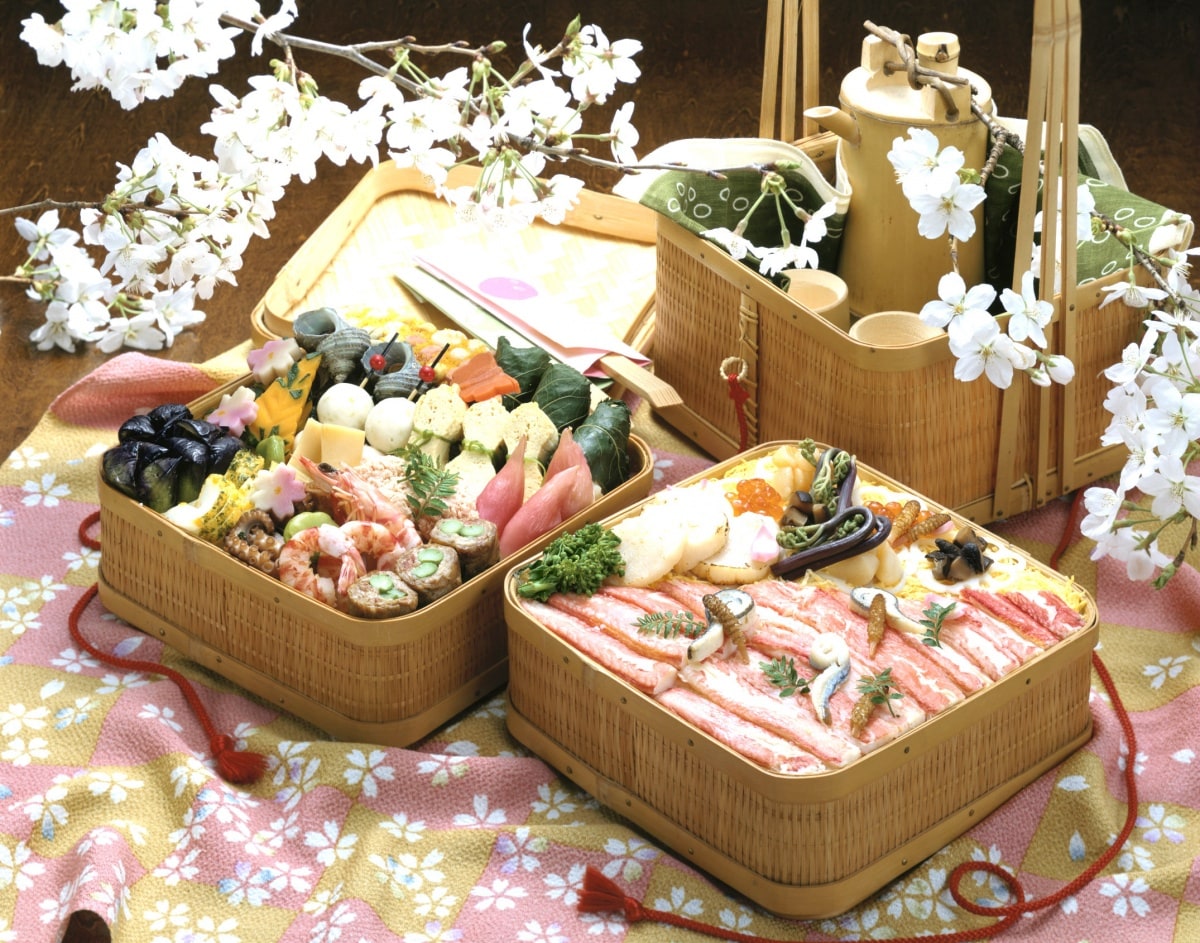
Koraku literally means picnic or excursion, and as you can already imagine, this kind of bento is made to be eaten outside, during picnics or events like hanami (cherry blossom viewing).
The koraku bento often comes in big boxes, with its content meant to be shared among all participants at room (or better, air) temperature.
Once again, the ingredients can vary. However, particular attention is paid to the seasons’ changing colors and flavors, and it also commonly includes single-portion food like onigiri or maki rolls.
0. Shikaeshi Bento, the ‘Revenge’ Bento

http://twitpic.com/a8vmbt
Finally, a kind of bento we hope you never get to try is the so-called shikaeshi bento, or revenge bento. It’s best not to have your wife or mother prepare you a bento after you’ve had a fight; the result may not be pleasant, ranging from a box brimming with sour umeboshi pickled plums to the word baka or aho (idiot) written out in seaweed. The note on the sad box of uncooked rice above more eloquently says, “Crime and punishment.”
While you may be overwhelmed by all these fancy variations, remember that bento is also the staple food for busy people—as its ubiquitous presence in convenience stores and supermarkets suggests. So just remember that cute boxes are nice but won’t hold much food, and that a simple noriben (white rice, bonito flakes sprinkled with soy sauce and seaweed) or rice with umeboshi will still keep you full through the day!



